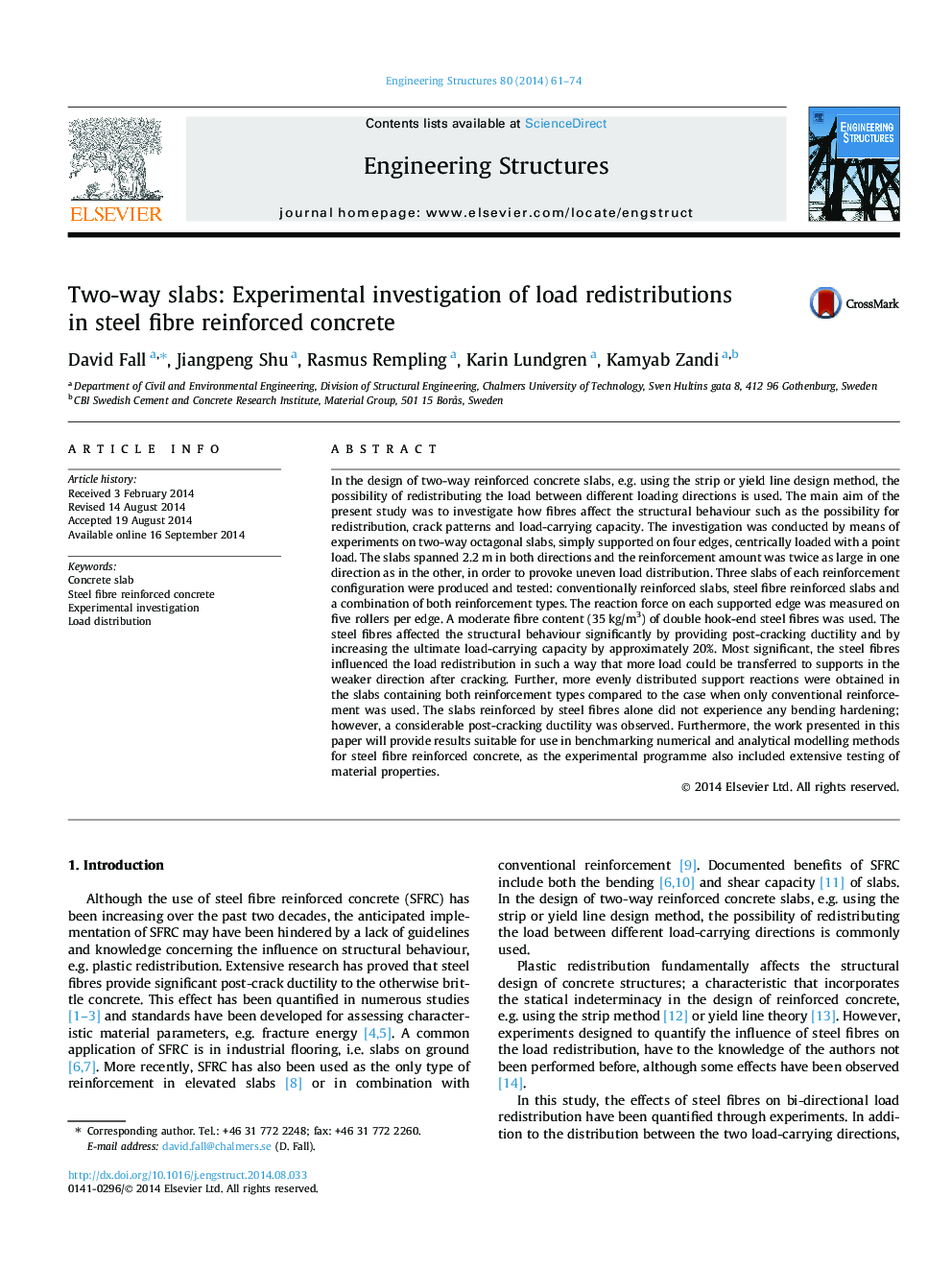| کد مقاله | کد نشریه | سال انتشار | مقاله انگلیسی | نسخه تمام متن |
|---|---|---|---|---|
| 266351 | 504357 | 2014 | 14 صفحه PDF | دانلود رایگان |
• Concrete slabs reinforced with conventional and steel fibre reinforcement were tested.
• Distribution of reactions forces was successfully monitored.
• Double end-hooked steel fibres influenced the ultimate capacity and load distribution.
• Design guidelines underestimated the load carrying capacity achieved in experiments.
In the design of two-way reinforced concrete slabs, e.g. using the strip or yield line design method, the possibility of redistributing the load between different loading directions is used. The main aim of the present study was to investigate how fibres affect the structural behaviour such as the possibility for redistribution, crack patterns and load-carrying capacity. The investigation was conducted by means of experiments on two-way octagonal slabs, simply supported on four edges, centrically loaded with a point load. The slabs spanned 2.2 m in both directions and the reinforcement amount was twice as large in one direction as in the other, in order to provoke uneven load distribution. Three slabs of each reinforcement configuration were produced and tested: conventionally reinforced slabs, steel fibre reinforced slabs and a combination of both reinforcement types. The reaction force on each supported edge was measured on five rollers per edge. A moderate fibre content (35 kg/m3) of double hook-end steel fibres was used. The steel fibres affected the structural behaviour significantly by providing post-cracking ductility and by increasing the ultimate load-carrying capacity by approximately 20%. Most significant, the steel fibres influenced the load redistribution in such a way that more load could be transferred to supports in the weaker direction after cracking. Further, more evenly distributed support reactions were obtained in the slabs containing both reinforcement types compared to the case when only conventional reinforcement was used. The slabs reinforced by steel fibres alone did not experience any bending hardening; however, a considerable post-cracking ductility was observed. Furthermore, the work presented in this paper will provide results suitable for use in benchmarking numerical and analytical modelling methods for steel fibre reinforced concrete, as the experimental programme also included extensive testing of material properties.
Journal: Engineering Structures - Volume 80, 1 December 2014, Pages 61–74
